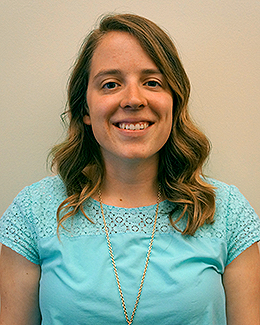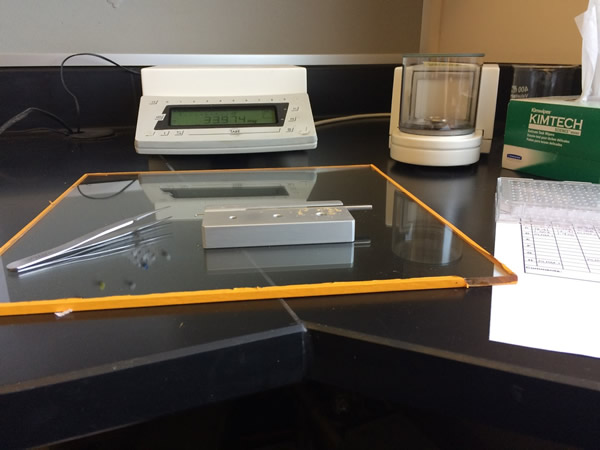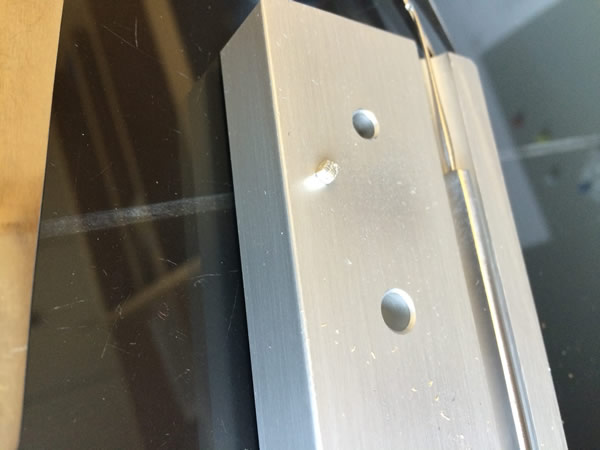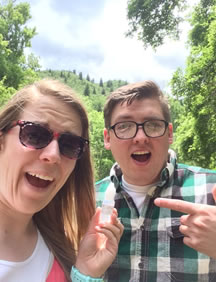iUTAH Team - Undergraduate iFellows

Darcie Christensen
Utah State University
Mentors:
Faculty: Christine Pomeroy, UU
Graduate: Pratibha Sapkota, UU
Research Focus:
Research Focus Area 2
Major:
Biological Engineering
Biography:
Darcie is a senior at Utah State University majoring in Biological Engineering. She loves the broad applications that her discipline covers, from medical research to biofuels to waste water treatment. She is excited to gain hands-on experience this summer in a new place doing new things. After graduation, she plans on attending graduate school and focusing on Biological Engineering and/or Engineering Education. When she's not doing homework or research, she's skiing, playing tennis or racquetball, laughing, shopping, baking, or cheering on her Aggies.
Weekly Recap:
Week 1 | Week 2 | Week 3 | Week 4 | Week 5 | Week 6 | Week 7 | Week 8 | Week 9 | Week 10 | Week 11
Week 1: May 19-20, 2016
This week was spent mostly in literature review. On Monday, I had pretty much no idea what I was doing for the project. I met with my graduate mentor, Pratibha, on Tuesday and got a lot of background on the purpose of the project. It is mainly focused on the efficiency of plants and microbes in removing nitrogen from stormwater in bioretention systems. There’s not much about these systems being used in arid climates, so the purpose of this research is to give developers a better idea of how to effectively build a bioretention system in urbanized areas here in Utah. I spent some time in the isotope lab being trained and weighing samples to be read using an Isotope Ratio Mass Spectrometer (IRMS). These samples came from plants in the bioretention systems here on campus. The samples were harvested at various times last year. We’re aiming to get the percentage of nitrogen contained in each of the samples so as to determine the efficiency of native Utah plants in removing and assimilating nitrogen from the stormwater.
Week 2: May 23-27, 2016
This week started off up at Utah State with another cohort meeting. The meeting was very helpful in establishing best practices in research and in helping us know what is expected for the final products of this project. The rest of the week was spent a lot like last week since my mentors were both out of town. I did a lot of literature review and began compiling the background and proposed methods for the project. The results came back from our isotope readings last week and were good, so the rest of the plant samples also need to be weighed and read. I ran into some issues with scale scheduling, so a lot of time next week will be dedicated to taking care of those samples so analysis can be done on nitrogen percentage in each of the respective plants. Pratibha will also be back, so we plan on going through existing data sets to make sure I know what data has already been taken and how it relates to the research I will be doing.
Week 3: May 30-June 3, 2016
It already seems like time is going so fast and there’s so much to be done! This week was spent preparing samples for isotope ratio mass spectrometry (IRMS). It is quite a tedious and time-consuming job. The workspace and product is shown in the images. A small amount of each sample (between 0.2-1.5 mg depending on the sample) must be measured into a tin cup then shaped into a cube to be placed in a well plate. After each sample is measured, the workspace and tools must be wiped down with ethanol to prevent contamination between samples. It takes around 7 hours to prepare 96 samples, which fills one entire well plate. I’ll hopefully be able to get all the samples prepared by early next week so in 2-3 weeks we’ll have the nitrogen percentages to analyze. We also got everything set up to begin PCR training next week. Other than that, I just worked on the beginning of my research paper!

The workspace where all the IRMS measuring is done.

The tin cup after it is formed into a cube.
Week 4: June 6-10, 2016
This week didn’t go quite as planned, but it was still a good week. Monday and Tuesday, I was able to finish up the samples for IRMS analysis, so hopefully in the next 2-3 weeks, those results will be back. I was supposed to get trained on the polymerase chain reaction (PCR) equipment so I could begin analysis on extracted bacteria from soil samples, but the biology lab that we have to go to for use of the equipment was booked with a high-priority project. Pratibha and I should be able to get in the lab on Tuesday to get trained though, so the PCR analysis should get rolling next week. Pratibha and I met to discuss the data for the allometric equations that need to be developed and she answered a lot of the questions I had. That led to organizing data and beginning work on those equations. I made a lot of progress on the introduction section of my paper and finished up the first draft of the introduction and methods sections for my poster as well.
Week 5: June 13-17, 2016
Monday, we had our third cohort meeting at BYU. We spent a lot of time practicing explaining the introduction and methods sections for our projects. It was very valuable and I received a lot direction for the future of my poster. We also got to go up Provo Canyon, just past Vivian Park, to learn about determining river velocity, concentration of nutrients, and contamination by Escherichia coli. It was fun to get some hands-on experience in collecting data and samples. The river was a little cold, but bearable! Tuesday, I was trained in the PCR lab. Since they work with a lot of low density DNA samples in their lab, we had to learn about all the protocols to avoid contamination. We focused our efforts on the standards for the ammonia oxidation (amoA) genes. There were a few mistakes made with the pipetting of these samples, so the results were not great. Wednesday, we re-did the standards with better protocol and got much better results. Today, we ran some of the dilutions of the standards again and then started incorporating samples into the readings. Here’s to hoping we get awesome curves so that next week, I can finish up the samples for amoA. In between all the PCR activities, I did some further reading about isotopes and began working on an EXCEL spreadsheet for the allometric relationships of our plants.

Andrew Hackett and I working with the
acidifier for the nutrient sampling.

Rebecca and I testing the velocity of the river.
Week 6: June 20-24, 2016
This week flew by! Monday and Tuesday were spent reading papers about isotope values of arid climate plants to determine whether our results from IRMS were comparable. We definitely have some interesting and different results from what most people have when it comes to nitrogen, but the carbon values were on track. According to standard values, most of our plants were considered nitrogen deficient (which means the nitrogen content is less than 2%). Pratibha said none of the plants were yellow when destroyed, so we’re not sure what the reasoning is. I’m now working on analysis of the IRMS results to compare the amount of nitrogen in the plants with the amount of nitrogen in the influent and effluent to see if the results are reasonable. Wednesday, Thursday, and Friday were spent finishing up the allometric equations for each type of plant that was destructed. This will allow biomass to be predicted non-destructively for other samples taken from the plants. The values obtained for nitrogen and carbon content can then be related to the predicted biomass to determine total nitrogen and carbon content. Thursday, I also attended a meeting to learn more about Gas Chromatography. Treven, another undergraduate student, is working with Pratibha on taking gas measurements from the bioretention systems to determine N2O concentrations. I am most likely going to help when they begin taking samples if the equipment all gets here and working.
Week 7: June 27-July 1, 2016
Monday, we had a cohort meeting here at the U. It was fun to be able to go to the Natural History Museum. It’s basically in my backyard, but I hadn’t been up there yet. Seeing the display about the information gathered by iUTAH was awesome. I love that they’re getting the word out about watershed changes to the general public. We also had the chance to go see the site where all the bioretention sites I am studying are. It was good to finally see the site since I am working on the data gathered from there, but hadn’t had the chance to go out there yet. We learned about how artificial storms were applied and improvements being made to the new bioretention gardens that are going in. The tipping buckets used for measuring the water that comes out of the bioretention gardens were also shown. We also got to see a couple of the GAMUT sites and learn about the data logged at each of those.
The rest of the week has been spent compiling and analyzing data. I have been going through all of our results from IRMS to see what the trends are for nitrogen content in the plants. So far, it looks like the upland (native) plants are performing just as well if not better than the wetland vegetation at removing nitrogen. The only problem is the standard deviations. Some of the deviations are bigger than the mean itself, so there is obviously a lot of variation. Whether that comes from the prediction of the biomass, errors in measurements, or really is just that varied, I’m not sure yet. But, it has been fun to finally see some data and results about what is going on. I have also been working a lot on finishing up my first official draft of the paper and getting my poster ready for our practice presentations next week!


Week 8: July 4-8, 2016
This week was a short week due to a holiday and I was out of town. Wednesday, we FINALLY got a good set of standards for our ammonia oxidating (amoA) genes! So next week, we will be doing a lot of PCR to get concentrations of this gene in our soil DNA extractions. Thursday was focused solely on getting my research poster the rest of the way put together. It took a ton of time to put together good figures, but it is coming together better than I could have imagined. Today was a meeting at Utah State to practice presenting our posters, which was a bit intimidating but very productive. It was great to get feedback from everyone. I can’t believe the symposium is next week!
Week 9: July 11-15, 2016
Symposium week! So a lot of this week was dedicated to finishing up, getting feedback, and printing for my poster! It’s awesome to see a set of tangible set of results (though far from perfect) in front of me. We also did some PCR this week with both some success and some interesting results. That’s how research goes though. These next two weeks will be focused on quantifying two more sets of genes as well as getting my paper and presentation done. The symposium today went really well and I got good feedback on my presentation. It was also interesting to see the different aspects of iUtah that I had not know before. Lunch was also delicious!

Week 10: July 18-22, 2016
Bioretention Systems are new low impact development that reduce storm water velocity runoff and remove contaminates in storm water runoff. My study has been focused on nitrogen removal by vegetation.
Week 11: July 25-29, 2016

All content provided on this iUTAH Team - Undergraduate iFellows weekly recap is unedited, updated by each participant to provide a review of their progress, and is for informational purposes only.


